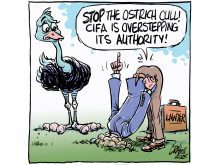AFTER FEDERAL budget night Jan. 27, not even the most partisan of government supporters could logically have argued that agriculture got much out of the $40 billion promised Conservative stimulus package.
Seven weeks later, the real new federal agriculture spending promised in the budget turns out to be just one-third of what it appeared to be that night, far less of the stimulus package than a producer might have guessed by listening to the rhetoric.
The total promoted by the Conservatives was $550 million over five years, which works out to just over one percent of the total package.
Read Also

Budget seen as fairly solid, but worrying cracks appear
The reaction from the agriculture industry to prime minister Mark Carney’s first budget handed down November 4th has been largely positive.
There is, of course, at least a partial explanation available to the Conservatives for the relatively low number. The billions of dollars agriculture typically receives each year to compensate for market failure to return at least cost of production come in statutory payments through programs like AgriStability, rather than new one-off federal stimulus.
Still, finance minister Jim Flaherty singled out agriculture as one troubled sector being helped.
“We will invest new funds over the next five years to help Canadian farmers to innovate, to increase competitiveness and to achieve greater environmental sustainability,” he said in his House of Commons budget speech.
Budget documents, along with agriculture minister Gerry Ritz’s sales job on the budget, identified $550 million in spending for agriculture over five years, as well as other rural help through internet broadband expansion and help for troubled resource industry communities.
But the agriculture-specific investments were much promoted.
Key was $500 million over five years for an agriculture flexibility program that immediately disappointed some farm group supporters of an “agriflex” program that could be used to support provincial or regional business risk management programs if needed. Ritz said BRM programs would not be eligible.
Then it became clear the $500 million over five years really is $190 million in new spending, since the rest will come from funds saved by cancelling such earlier announcements as a promised annual $100-million cost-of-production payment.
But at least there was the three-year commitment to make $50 million available to investors who have raised money to expand or build slaughter capacity in provinces or regions now under-served.
It would be money invested, the budget said. It would be “federal contributions” to match private sector funding.
It turns out none of that is true. It is $50 million in long-term low interest loans, far from what the industry was led to believe.
The government has known for some time that it was to be a loan program, not an “investment” or “matching contribution.”
It is curious why the news had to dribble out through junior agriculture minister Jean-Pierre Blackburn in an interview with a Quebec farm newspaper.
Why not be clear and upfront?
In a poll by Winnipeg-based Ipsos Forward Research in February, three-quarters of surveyed farmers said they did not think the budget will help agriculture.
That 25 percent endorsement likely would have shrunk had farmers known more about the incredibly shrinking $550 million commitment.














